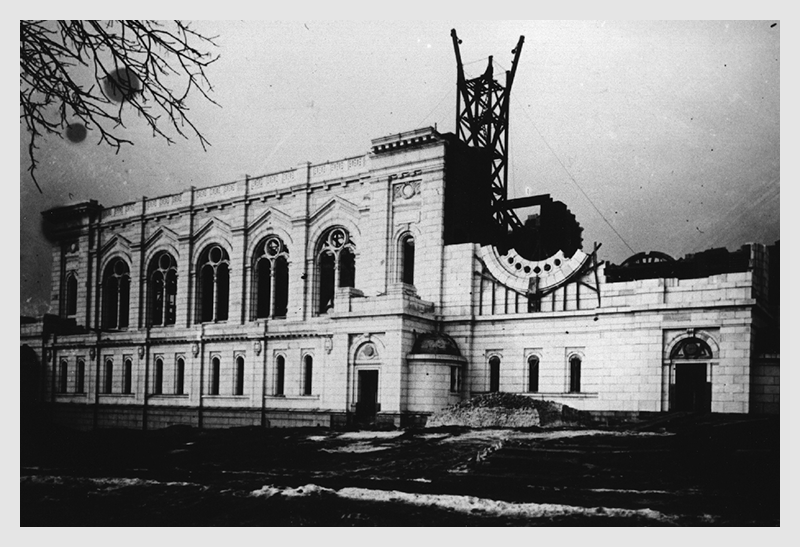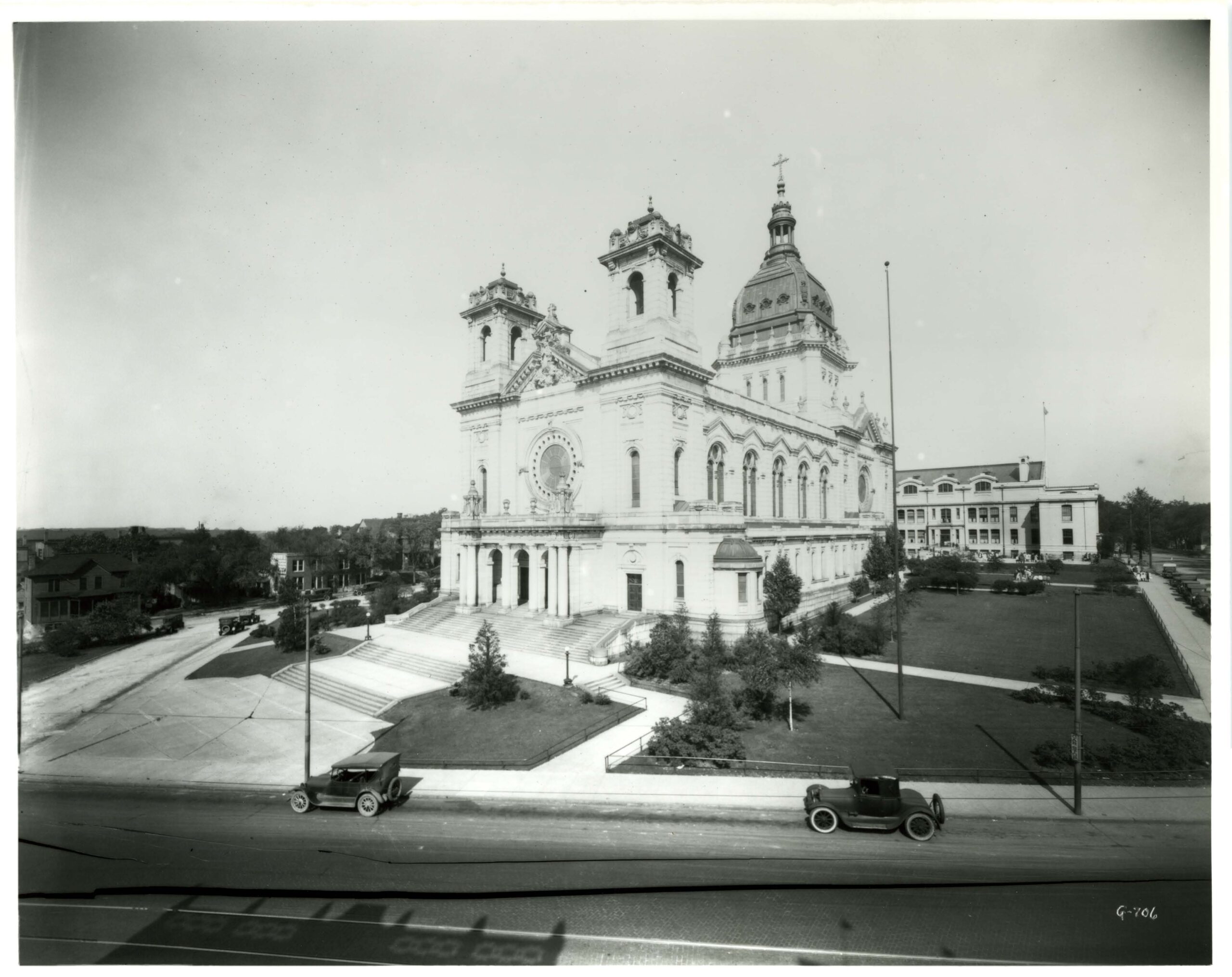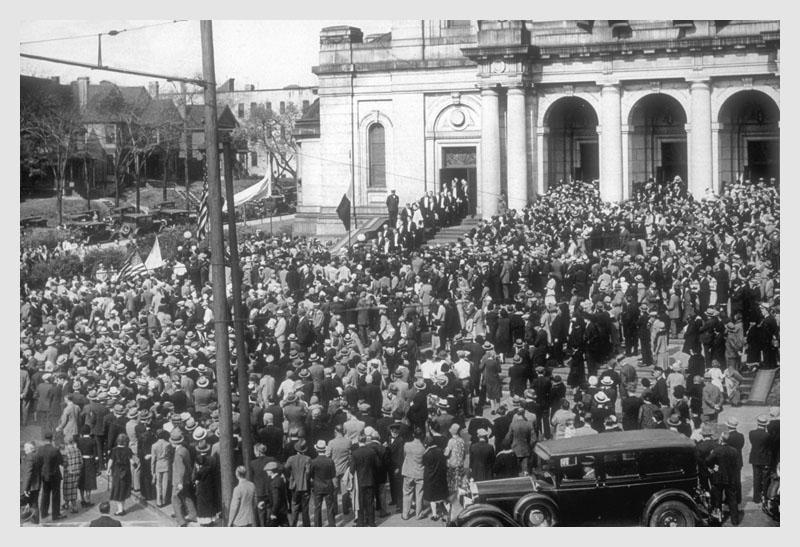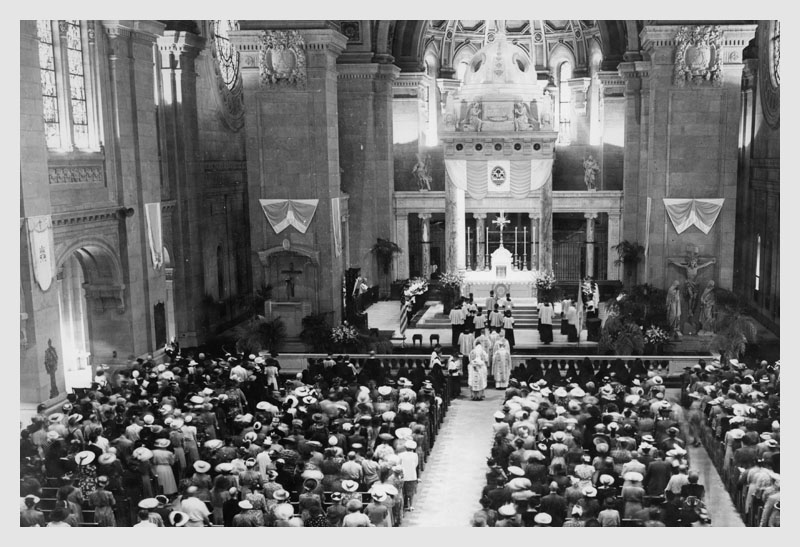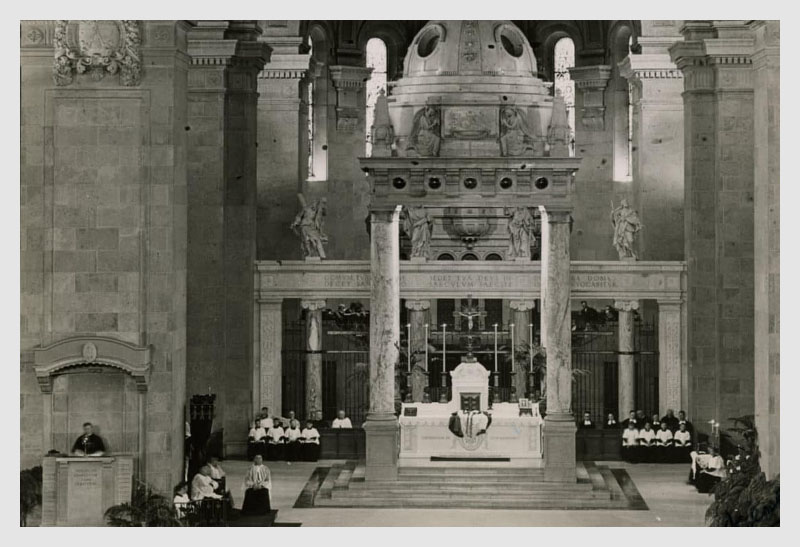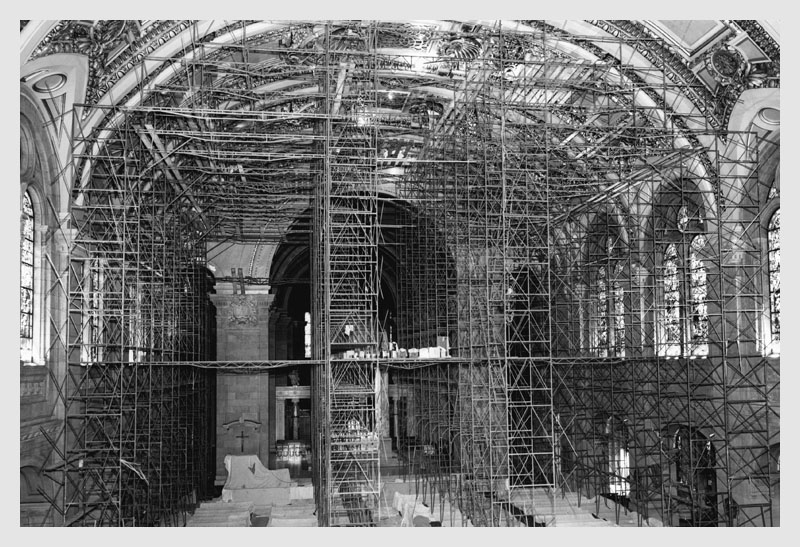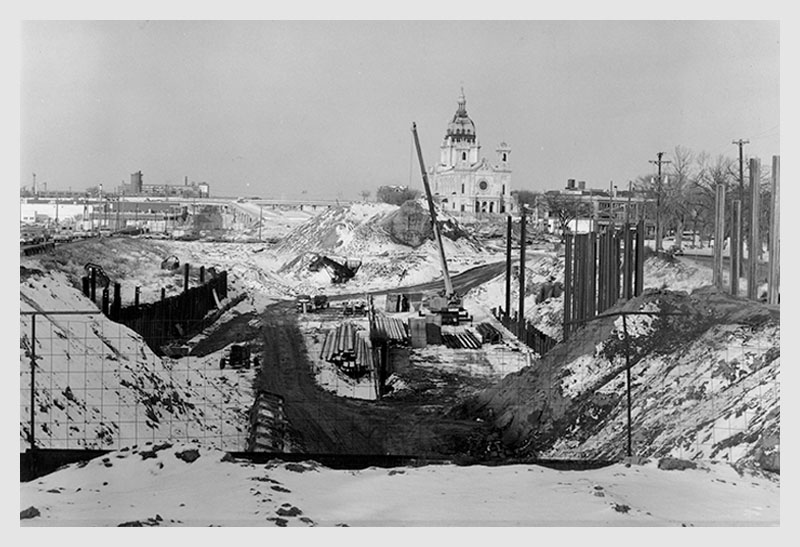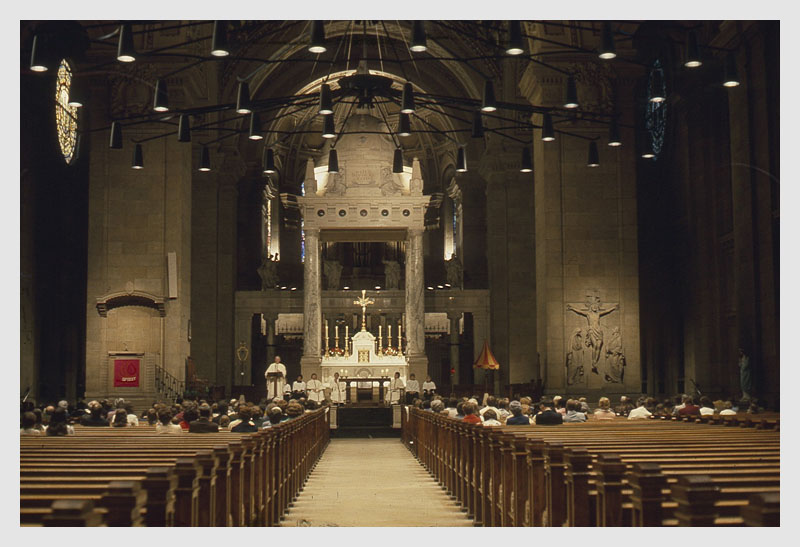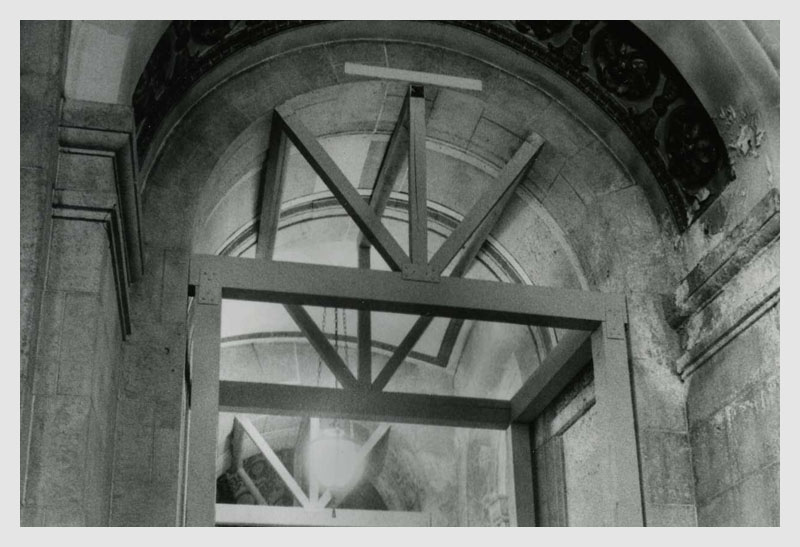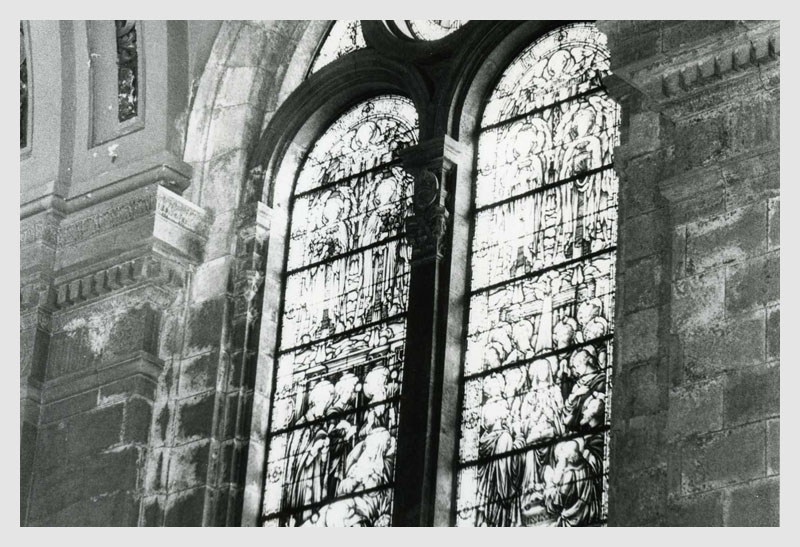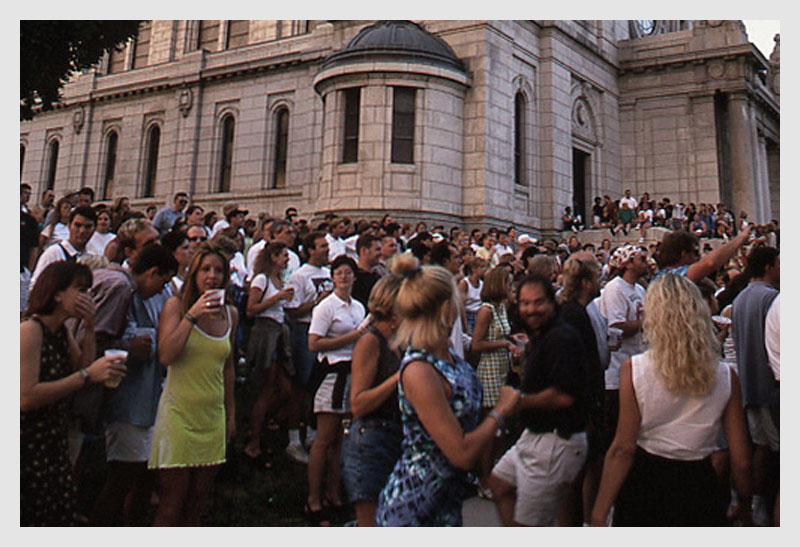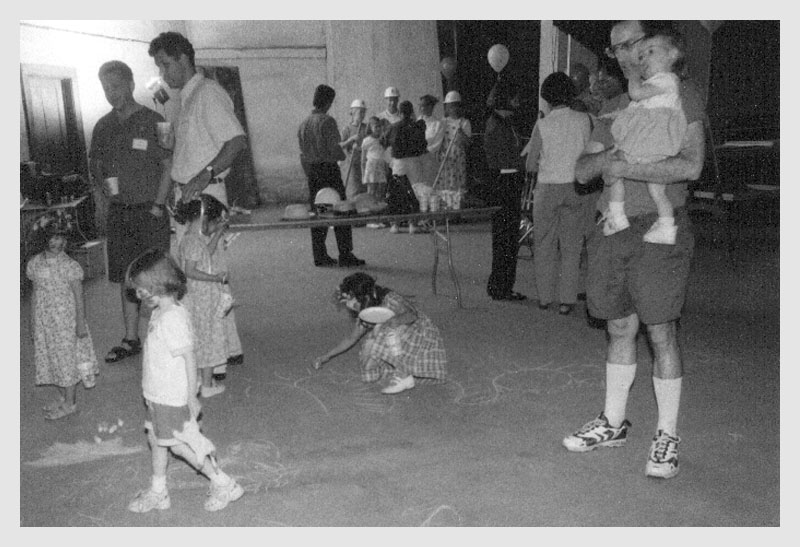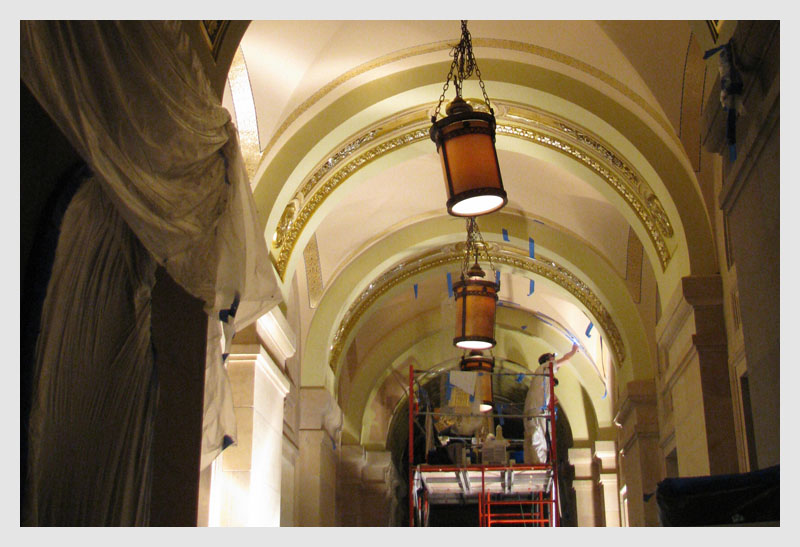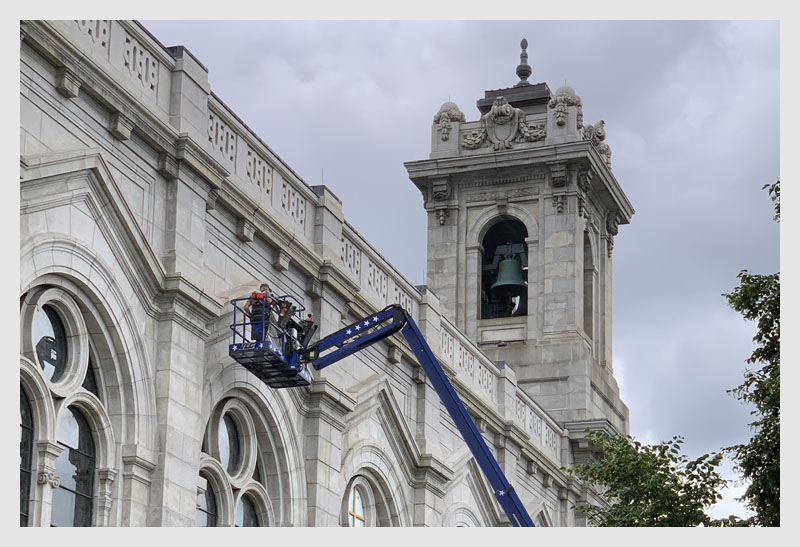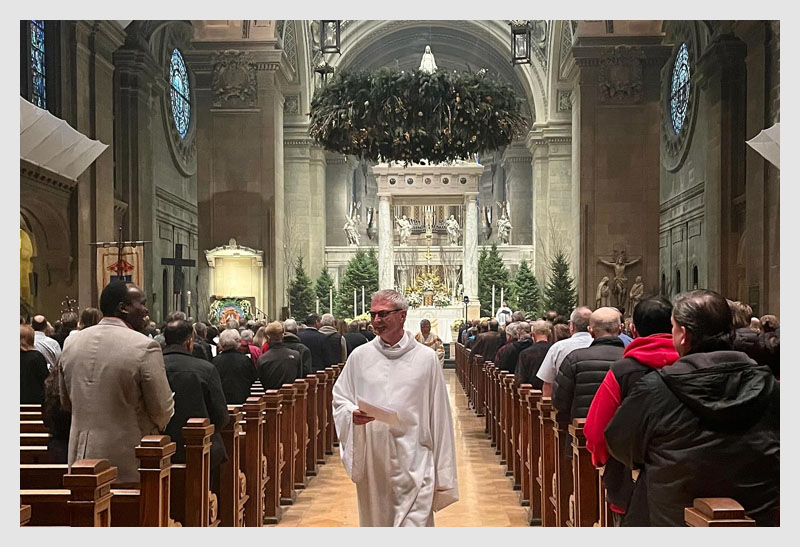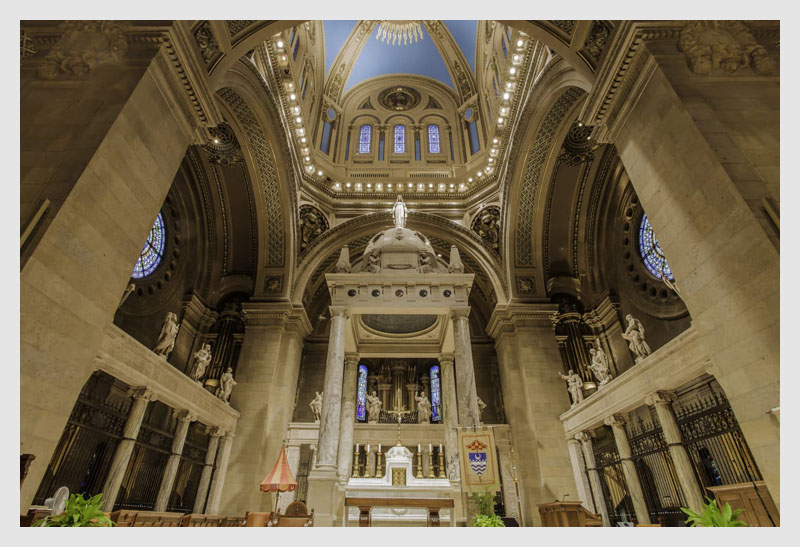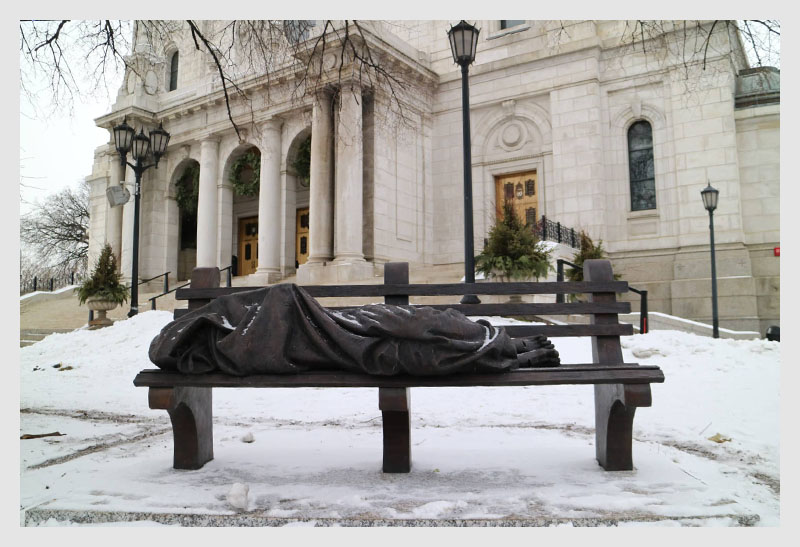The story of our Basilica building’s first century includes an ongoing battle against the harsh Minnesota climate exacerbated by inherent design challenges, which have been overcome by each generation of leaders, parishioners, builders and artisans. Understanding this history allows us to understand the needs of today and informs the future of our preservation efforts.
1900-1910s: Beginnings
The Basilica of Saint Mary was constructed between 1907 and 1915; at the solemn dedication on August 15, 1915 the exterior was finished but no interior work was completed; a wooden altar and pews were the only furnishings. Already by 1914, checks and cracks had begun to appear on the foundation walls.
A 1920 photo of the exterior of the Pro-Cathedral of Saint Mary provided by the MN Historical Society
1920s: Completion
Following delays due to WWI and the deaths of Architect Emmanuel Masqueray and Archbishop John Ireland, the intention to finish the interior of the new church was announced December 3, 1922. By 1927 the altar, nave, sanctuary and stained-glass windows were complete.
1930s: Golden Days
Now officially named The Basilica of Saint Mary of Minneapolis, Minnesota, it enjoys the distinction of being the first Catholic church in the United States to be raised to the dignity of a Minor Basilica by the Holy See. The Silver Jubilee of the First Mass was celebrated in 1939.
The solemn consecration of The Basilica of Saint Mary, June 27, 1941.
1940s: First Exterior Repairs
Following the solemn consecration on June 27, 1941, significant work occurs from 1942-1946. The dome of The Basilica was thoroughly overhauled – the copper covering was repaired, soldered and made water-tight and masonry sealed to address leaking. Reportedly “Basilica is in splendid state of repair…Some mistakes were made in design that can be corrected and some that will probably have to be put up with…”
1950s: Interior Redecoration
The interior of the Church was re-decorated between July and October 1953. The Bronze doors were added in 1954. Restoration of the Masonry was undertaken in 1955; sealing of the exterior by applying protective coating later proved to be a regrettable decision.
Construction of Highway 94 began in the 1960s.
1960s: Change & Challenge
Roof and stained-glass maintenance were undertaken in the early 1960s, but freeway construction beginning in 1964 took a toll on the building and the parish community. On December 8, 1966, The Basilica was dedicated as the Co-Cathedral of the Archdiocese of St. Paul and Minneapolis.
1970s: Uncertain Times
The Basilica was entered on the National Register of Historic Places, but with the Parish in decline, abandonment and/or demolition of the church were real possibilities. The Basilica school closed due to disruptions and falling enrollment. Signs of disrepair began to emerge in the late 1970’s.
Low attendance at The Basilica as the building started to show the first signs of disrepair.
Visible water damage and support beams to hold it all together.
1980s: Disrepair
The late 1980s began a time of growth and renewed interest in church activities, but water was leaking through the dome and into the ceiling after each snow or rainfall, and the plaster ceiling suspension was found to be faulty. Copper from the dome blew off during a storm and plaster chunks fell into the sanctuary. By the mid-1980s it was evident that repairs were desperately needed. The building was stabilized with scaffolding and assessments were completed.
1990s: Hope & Promise
The Friends of The Basilica and the Basilica Block Party were organized to raise funds for the very significant capital projects required to save the building, including structural integrity, stone and plaster repairs, a new copper roof and dome, and completion of the undercroft space.
One of the first Basilica Block Parties and The Basilica undercroft prior to completion.
Repairs and renovations continued through the 2000s, including a complete restoration of the narthex in 2012.
2000s: Stabilization
Water incursion continued to be an issue, requiring exterior restoration of roofing and windows in 2002-2004. The parish continued to flourish; support from the formation of the non-profit separation of The Basilica Landmark began addressing the ongoing maintenance needs of the church and campus.
2010s: Gaining Momentum
Modern technology enabled ongoing monitoring of moisture levels throughout the building, which initially served to pinpoint necessary repairs. As the interior walls continued to dry, planning for an interior restoration could begin. Restoration of the Sacristy and the Narthex in 2012 created references for the promise of a full interior restoration, which had been envisioned for several decades.
Meticulously tuckpointing The Basilica exterior is an ongoing task.
2020s: Vision & Preparation
After years of testing, feasibility study and planning, preparations are underway to complete exterior repairs and begin interior restoration. This vision has been decades in the making, and is a generational event in the history of this sacred landmark building.


